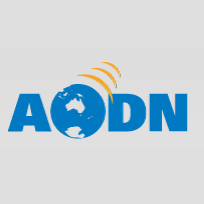Full description
This study assessed the performance of diffusive gradients in thin-films (DGT) with a binding resin that used Chelex-100 (iminodiacetic acid functional groups) to measure cadmium, copper, nickel, lead, and zinc contaminants in Antarctic marine conditions. To do this, three sets of experiments were done: (I) the uptake of metals to DGT samplers was assessed over time when deployed to three metal mixtures of known concentrations (DGT performance page). This allowed for the determination of metal diffusion coefficients in Antarctic marine conditions and demonstrated when metal competition for binding sites were likely to occur. (II) the DGT were deployed in the presence of the microalga Phaeocystis antarctica at a concentration of 1000-3000 cells/mL to investigate how environmentally realistic concentrations of an Antarctic marine microalgae affect the uptake of metals (DGT uptake with algae page). Finally, the DGT-labile concentrations from part (II) were used in reference toxicity mixture models to predict toxicity to the microalgae so they could be compared to a previous study that investigated the toxicity of metal mixtures to Phaeocystis antarctica and Cryothecomonas armigera (DGT toxicity modelling page).Lineage
Progress Code: completedNotes
PurposeThese laboratory experiments investigate the applicability of DGT to measure the common metal contaminants cadmium, copper, nickel, lead, and zinc in conditions reflective of the Antarctic marine environment. These experiments determine the diffusion coefficients necessary to calculate DGT-labile concentrations in field deployments, identifies the influence of microalgae to the accumulation of metals, determines the concentration at which metal-metal competition is likely on the binding resin, and demonstrates the use of DGT-labile concentrations in contaminant mixture reference models to predict toxicities to two Antarctic marine microalgae.
Data time period: 2017-06-15 to 2017-06-22
text: westlimit=14.0625; southlimit=-66.79191; eastlimit=166.64063; northlimit=-48.16243
User Contributed Tags
Login to tag this record with meaningful keywords to make it easier to discover
Download the dataset (GET DATA)
uri :
https://data.aad.gov.au/eds/4811/download![]()
Public information for AAS project AAS_4326 (PROJECT HOME PAGE)
uri :
https://projects.aad.gov.au/search_projects_results.cfm?project_no=AAS_4326![]()
Public information for AAS project 4326 (PROJECT HOME PAGE)
uri :
https://projects.aad.gov.au/search_projects_results.cfm?project_no=4326![]()
Citation reference for this metadata record and dataset. (VIEW RELATED INFORMATION)
uri :
https://data.aad.gov.au/aadc/metadata/citation.cfm?entry_id=AAS_4326_DGTvalidation![]()
- global : AAS_4326_DGTvalidation


